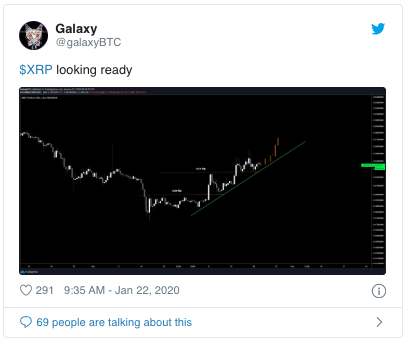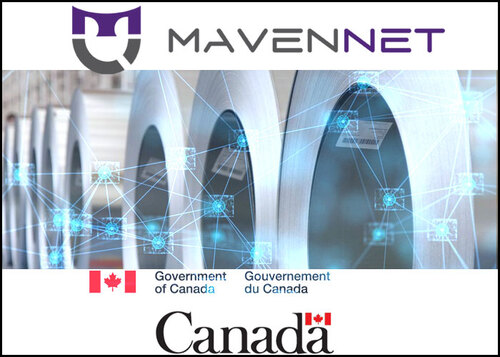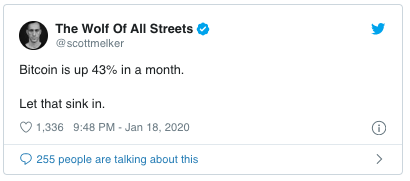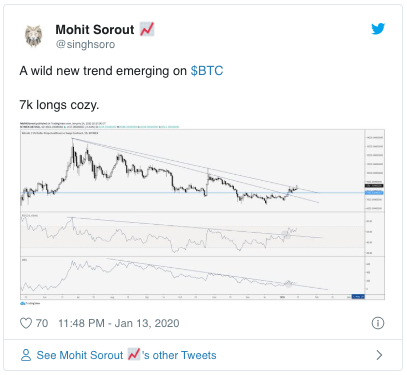Why Centralized Exchanges are Decentralizing

Image courtesy of CoinTelegraph
 JAN 19, 2020
JAN 19, 2020
In an industry built on an ethos of decentralization and the empowerment of individuals, where the key idea is that each and every person should have control of their own wealth and begin acting as their own bank, we’ve seen centralized custodial exchanges lead the charge up until now. Now, as the industry continues to develop ethos, we’re seeing centralized exchanges beginning to adopt more properties of decentralization.
Decentralization advances the protection of funds, transparency, economic inclusion and regulatory clarity while empowering each individual to become the custodians of their own funds. As centralized exchanges begin to recognize the benefits of decentralizing, the end result is a stronger, more trusting consumer and industry.
Trust
Trust is the foundation on which all relationships are built — with partners, family, friends and businesses — all are rooted deeply in trust. But trust isn’t given freely, it must be earned. Trust is more than an asset, it is the lifeline that dictates the longevity of a relationship.
The loss of trust in centralized entities has given birth to blockchain, a technology based on decentralization, in the hopes of redefining the concept of trust for the next wave of financial systems.
Blockchain technology has the potential to turn financial systems upside down by redefining trust. However, we mustn’t be misinformed. Just because an organization or business claims to employ blockchain technology, this doesn’t automatically make them more trustworthy. The trustworthiness in blockchain stems from the design choices businesses make when employing them.
We are reminded from time to time of the consequences of these design choices. This includes over $4 billion in stolen funds from crypto-related cyberattacks in 2019, with some of the biggest exchanges targeted by cybercriminals. Most notable this year are the incidents on Coinbase, Binance and BitHumb. These are all reminders of how people’s trust in blockchain has been tarnished. The foundations of the technology looking to disrupt the financial systems are still fragile.
But it doesn’t have to be this way
And for this reason, leaders in the industry are making design choices that entirely change how trust is handled. These leaders are decentralizing key business functions to strengthen their foundation. This can be seen first and foremost with exchanges and custody solutions that are transitioning to non-custodial solutions. On an exchange that uses custodial solutions, users need to deposit their funds into a centrally controlled wallet in order to trade. Non-custodial solutions, however, allow users to fully interact with the exchange without requiring deposits into a centrally controlled wallet. Access and control of funds never sits with a third-party, only with the owner of the funds, and counterparty risk is completely removed.
To illustrate this point, imagine the following scenario with centralized, custodial solutions. John wants to buy one BTC with another digital currency, such as EOS. To buy this Bitcoin, John must first transfer his EOS onto an exchange. Once the EOS enters the exchange, he can then interact with the exchange and trade his EOS for the one Bitcoin. At this stage, John is essentially trusting the exchange to hold custody over his assets. During this time, his assets are exposed to several risks. His assets are vulnerable to hackers, exchange shutdowns, flight risks, insolvency or freezing of his account. In all cases, John may lose access to his funds forever.
The scenario is quite different for non-custodial solutions. Non-custodial solutions eliminate the need to trust a third-party with precious assets. Assuming again that John wants to buy one BTC with his EOS, he would go on a non-custodial exchange and initiate a trade for one Bitcoin directly from his wallet. John does this through a trustless smart contract, a transparent computer protocol which enforces the performance of a contract when certain conditions are met. In this case, John agrees to the actions being taken on his funds, and that there are no errors in the transaction. The smart contract recognizes that John has deposited enough EOS to receive one Bitcoin, and the trade is executed, resulting in one BTC being deposited directly into John’s wallet. At this stage, John can do whatever he wishes with his new Bitcoin, as it is already in his possession. He has avoided all the risks of entrusting a central intermediary with custody of his assets.
Decentralizing the element of custody — a small change in business models — ultimately leads to the decentralization of trust. By redefining how trust is handled through a trustless system, exchanges are slowly rebuilding some of the lost reputation with consumers while paving the way for new relationships, where the element of trust is no longer an obstacle in doing business.
Decentralization redistributes power and trust
As centralized entities shift their focus toward decentralization, the end result is beneficial to both consumers and the industry. Decentralization promotes security, transparency, financial inclusion and regulatory clarity, and empowers the individual.
The decentralization of custody means that we are no longer trusting a single entity to have authority over deposits, withdrawals, and the storage and security of funds. Customer funds will no longer be centrally located, giving birth to an entirely new paradigm. Institutions and exchanges will no longer be a central point of attack, eliminating the lurking fear of victimization by cybercriminals, who will no longer be in a position to engage in foul play with funds.
Decentralization redistributes power and trust back to the individual. Gone are the days where customers can’t withdraw or access their funds due to an exchange becoming hacked or insolvent. Customers can instantly interact with multiple exchanges without waiting to transfer funds from one exchange to another.
Decentralization is more secure by design, and in an industry expecting $5 trillion in losses due to cybercrime in 2021, it’s important that industry leaders innovate to meet this challenge. Losses and exchange hacks are some of the biggest concerns of regulatory authorities, but decentralization can relieve most of them.
The hurdles faced in adopting decentralized solutions
While decentralizing certain business aspects has clear benefits, there are several obstacles businesses must overcome before they can deliver the same user experience as their nondecentralized counterparts and achieve wider adoption. Three of the biggest hurdles to the widespread use of decentralized financial systems are:
- Liquidity: Exchanges that are based on decentralization have significantly less liquidity compared to their centralized counterparts. The widespread use of these exchanges has yet to reach the majority of users, as there is an entirely new learning curve in getting accustomed to such platforms. Users need to learn how to keep custody of their own funds while connecting their wallets to the platform. The lack of users equates to a lack of liquidity, so it’s important for exchanges to attract more users or to provide liquidity from other sources.
- Throughput and speed: Throughput and speed are limitations of decentralized exchanges. These exchanges often rely on a blockchain network for settling trades. So, exchanges that are built on Ethereum for example are at the mercy of Ethereum’s maximum transaction throughput of about 15 transactions per second. Even if millions of users were to switch to a decentralized exchange today, some exchanges wouldn’t be in a position to adequately handle the demand. Exchanges need to be able to handle hundreds, if not thousands, of trades their users make each second. A low transaction throughput limit can cause major delays in transactions or even prevent them from being executed and can lead to millions of dollars in losses.
- User experience and features: With decentralized exchanges still in the early stages of development, they are often lacking in features, putting limitations on users’ trading experience. Different order types, from basic limit orders to more advanced order types like Immediate or Cancel orders, and Fill or Kill orders are often missing on decentralized exchanges. Other users may need to margin trade or connect with the exchange’s API to get real-time financial data for analysis. The truth is, users won’t make the transition to a platform that is lacking features that are critical to their trading strategies.
Instilling trust today for the financial systems of tomorrow
The financial systems of tomorrow will be responsible for the trade of real estate, gold, money, securities, cryptocurrencies and other assets, digitally. With trillions of dollars flowing through these systems, the design choices we make today are more important than ever in instilling trust in these systems — trust that our assets are always in our possession; trust that our assets are secure; trust that the companies we do business with are being honest and fair.
Decentralization, when executed properly, results in systems that offer more transparent, secure and higher-performing solutions. It is an essential building block for systems to build trust. Successful implementation of decentralized technology means empowerment for millions of people, whereas failure will result in the loss of all its benefits.
For the greater good of financial systems and their participants, conscious steps toward decentralization need to be taken.
The views, thoughts and opinions expressed here are the author’s alone and do not necessarily reflect or represent the views and opinions of Cointelegraph.
Original article posted on the CoinTelegraph.com site, by Steven Quinn.
Article re-posted on Markethive by Jeffrey Sloe































